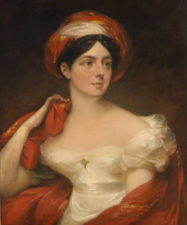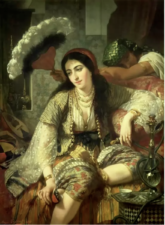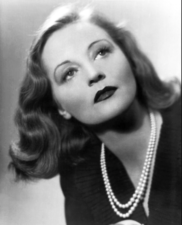
Background
As Carol Boyce Davies has noted, black women have been consistently written out of accounts of black international radicalism. The life and work of Eslanda Goode Robeson is a case in point. Born in Washington, D.C. in 1896, Eslanda Cardozo Goode, or Essie as she was more commonly known, moved to New York City with her family as a young girl after the death of her father. An excellent student, she would go on to study at both the University of Illinois and Columbia University and was awarded a B.S. in chemistry in 1923. Alongside her studies, Essie also worked as a surgical technician and chemist at New York’s Presbyterian Hospital, where she would meet the young athlete, singer and actor Paul Robeson as an inpatient. The two married in 1921. Essie’s marriage to a man who would go on to become one of the most instantly recognisable African American figures of the twentieth century was arguably a double-edged sword in terms of her developing black international activism. Through her close association with Paul Robeson, Essie was afforded numerous opportunities to articulate her political views, and perhaps most significantly, was able travel the globe as the wife of one of the world’s leading black performers. However, Essie’s marriage also meant that the intricacies of her own life, her strong anticolonial and black feminist views, as well as her role in influencing Paul’s own black international politics have largely been obscured. The activism of Eslanda Goode Robeson from the 1920s up until her death in 1965 brought together movements for black self-determination throughout the black diaspora and Africa, and crucially made important transnational links between the militant activism of black women globally. By focusing on her political engagement with anticolonial activism in Africa, this blog entry will hopefully contribute in some small way to our understanding of Essie Robeson as a central figure in the development of black international politics in her own right.
Eslanda Robeson’s African Activism
Essie Robeson first visited Africa in 1936. Accompanied by her nine-year-old son Paul Jr., she travelled extensively, arriving first in South Africa and then moving up to Uganda with additional excursions to Tanganyika, Zanzibar, Kenya, the Congo and Egypt. Essie published an account of her travels throughout Africa in her 1945 book African Journey. Her burgeoning interest in African affairs had been fuelled by her experiences whilst living in London between 1932 and 1934. In London she met many African students, including future African leaders Nnamdi Azikiwe and Jomo Kenyatta, whilst also enrolling on a graduate degree course in anthropology at the LSE in order to study the culture of Africa. It is possible to see African Journey as the final product of these studies. As Maureen Mahon and Charles Musser have argued, her account of Africa differed greatly from the majority of anthropological studies of the continent. Essie steadfastly refused to buy into ideas of ‘African primitivism’, instead favouring an analytical approach that sought to trace the connections between Africa and the wider world and viewed the African people that she met as sharing an essential common humanity. As she commented when reflecting on her African trip: “When I travelled through AFRICA, I discovered that I belonged to the AFRICAN family, with 150 million AFRICAN RELATIONS, with an ancient and honorable historic and cultural background.” It was this belief, and specifically the idea of the fundamental connectedness of Africans and African Americans, that shaped Essie’s relationship with Africa in her subsequent black international political writings.
In the anticolonial ferment that followed World War Two, Essie Robeson worked tirelessly in the United States on behalf of African independence. Essie was a key member of the Council on African Affairs (CAA), an organisation dedicated to black self-determination in Africa. Whilst the CAA is more often associated with the work of Paul Robeson and its other prominent male leaders, she played a prominent role in the organisation and even provided the organisation with its first financial donation. Essie was also active in the Sojourners for Truth and Justice (STJ), a short-lived radical black feminist group based in Harlem. As an organisation the Sojourners had a global outlook and attempted to forge links with black women in Africa. The STJ actively supported the South African defiance campaign of 1952 and corresponded with a number of black South African women’s leaders of the mass civil disobedience of the 1950s including Bertha Mkize. The militant activism of black women in Africa fuelled Essie’s own commitment to black self-determination. As she proudly commented of the defiance campaign: “The ever-increasing, solidifying drive for freedom and self-government has penetrated into every corner of Africa. In the bush, in the hills, in the remote villages, as well as in the towns and cities, the cry of “FREEDOM! FREEDOM! FREEDOM! SELF-GOVERNMENT NOW!’ is echoing in every African heart.”
Black International Feminism
In her political writings Essie Robeson repeatedly stressed the important role of women in black self-determination movements. Reflecting on anti-apartheid protest in South Africa, she commented that: “The women of Africa have always taken an active part in protests and demonstrations for independence, and against repression. They have come out, with their children, some of them with babies on their backs, to join the men in protest.” For Essie it was imperative that black women take the lead in political struggle. Central to this view was the concept of the extended ‘African family’. When writing on Africa, Essie often evoked the metaphor of the family in order to bring together movements for black self-determination in Africa and throughout the black diaspora. For example, when in Ghana in 1958 to report on the All-African People’s Conference, she chose to view this event as a gathering of the extended African family whose members stretched far beyond the confines of the continent itself. Characterising the meeting as “an internal domestic matter of deep concern” and noting the prominent role women could play in Pan-African politics, Essie concluded that: “When it comes down to a question of survival and well-being of its members, this family is closing ranks in order to present a strong united front (a 200 million strong united front) to the world on the number one question: Independence and Self-Government for ALL the members of the African Family.” Essie’s ideas of the African family enabled African Americans to (re) imagine an intimate connection to Africa, a familial connection that had been stripped away by imperial systems of commerce and thought. As prominent figures in the black family, Essie asserted, black women would inevitably play an equally prominent role in international issues relating to black freedom throughout Africa and the wider black diaspora.
Essie Robeson’s life and political writing is representative of how radical black women negotiated patriarchal structures that sought to obscure their activism and claimed a space for themselves as prominent figures in global movements dedicated to black self-determination. Throughout her career Essie Robeson spoke for black women on the global stage in ways that challenged their race, class and gender oppression and asserted their position at the forefront of the politics of radical black internationalism.
Further Reading
Eslanda Robeson Papers. Moorland Spingarn Research Center, Howard University, Washington, D.C.
Eslanda Goode Robeson, African Journey (London: V. Gollancz ltd, 1946).
Carole Boyce Davies, ‘Sisters Outside: Tracing the Caribbean/Black Radical Intellectual Tradition’, Small Axe, 13 (2009).
Maureen Mahon, ‘Eslanda Goode Robeson’s African Journey: The Politics of Identification and Representation in the African Diaspora’, Souls, 8 (2006).
Jacqueline Castledine, ‘“In a Solid Bond of Unity”: Anticolonial Feminism in the Cold War Era’, Journal of Women’s History, 20 (2008).
Martin Duberman, Paul Robeson (Paw Prints, 2008).
Charles Musser, ‘Presenting “A True Idea of the African of To-day”: Two Documentary Forays by Paul and Eslanda Robeson’, Film History: An International Journal, 18 (2006), 412-439.
Erik S. McDuffie, Sojourning for Freedom: Black Women, American Communism, and the Making of Black Left Feminism (Duke University Press Books, 2011).
Ann Laura Stoler, Haunted By Empire: Geographies of Intimacy in North American History (Durham, Duke University Press, 2006).
Nicholas Grant is a PhD candidate at the University of Leeds working on the transnational networks of black protest that existed between the United States and South Africa in the 1940s and 1950s. He is particularly interested in the role that black women played in forging these global ties and relationships and hopes that, through BHM, the fascinating lives of many of these under-researched female figures will become more widely known.



2 thoughts on “Black History Month: Eslanda Goode Robeson”
Comments are closed.